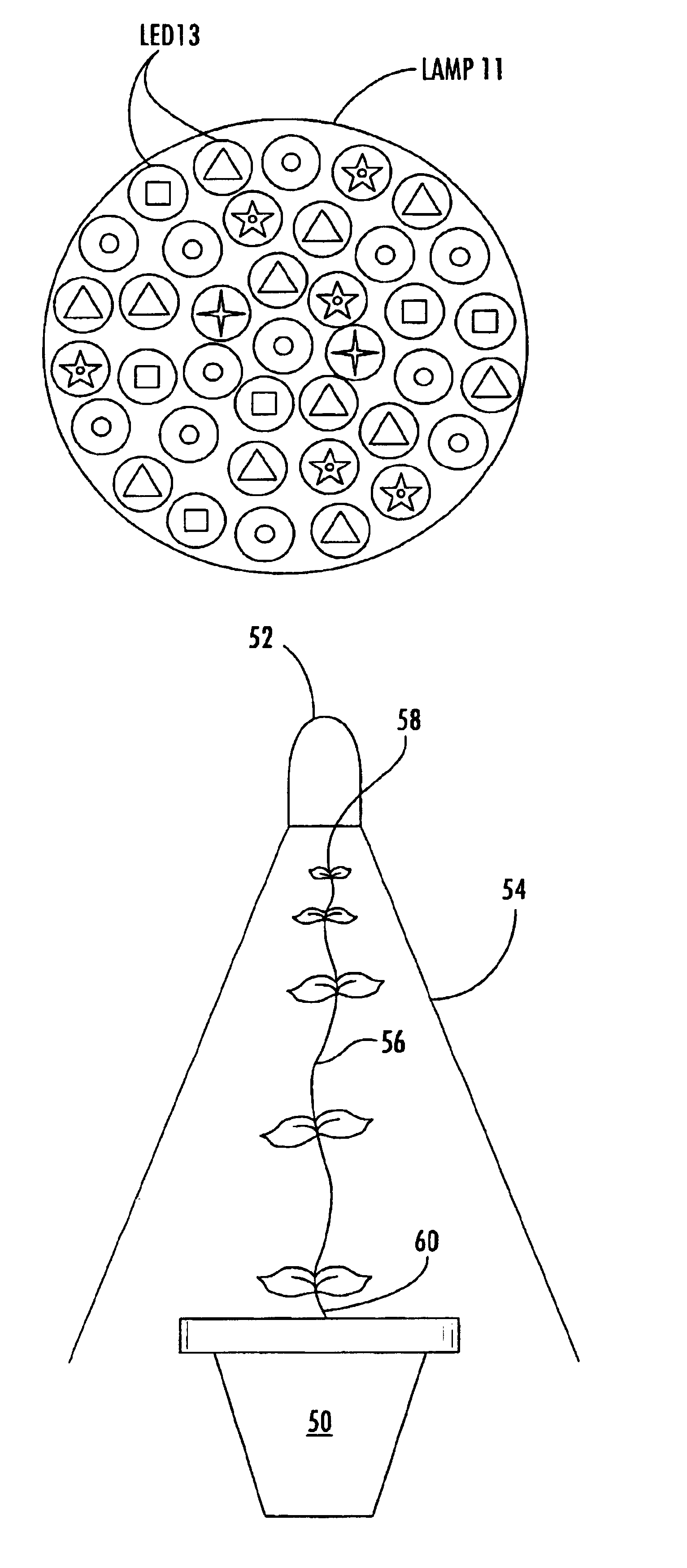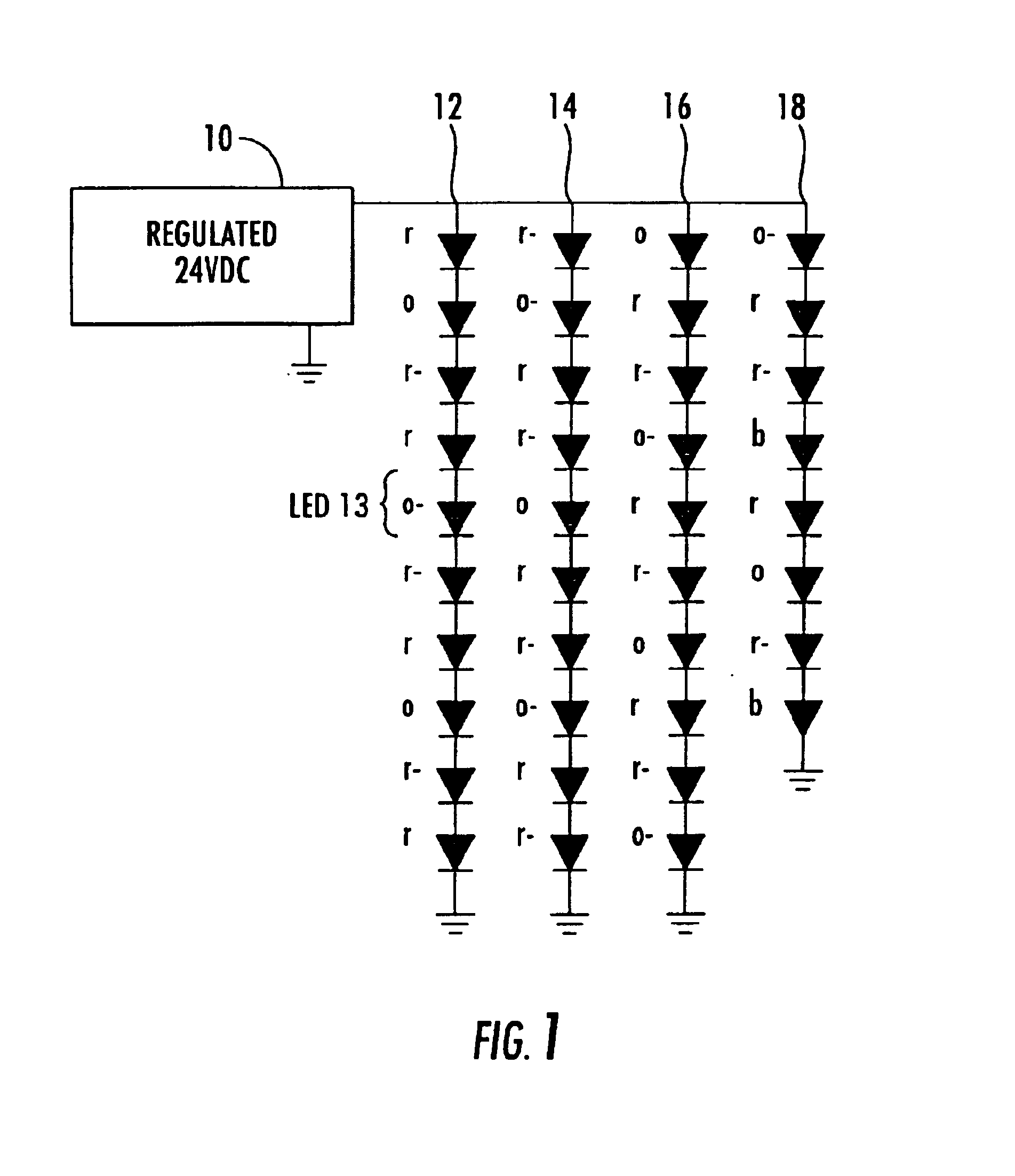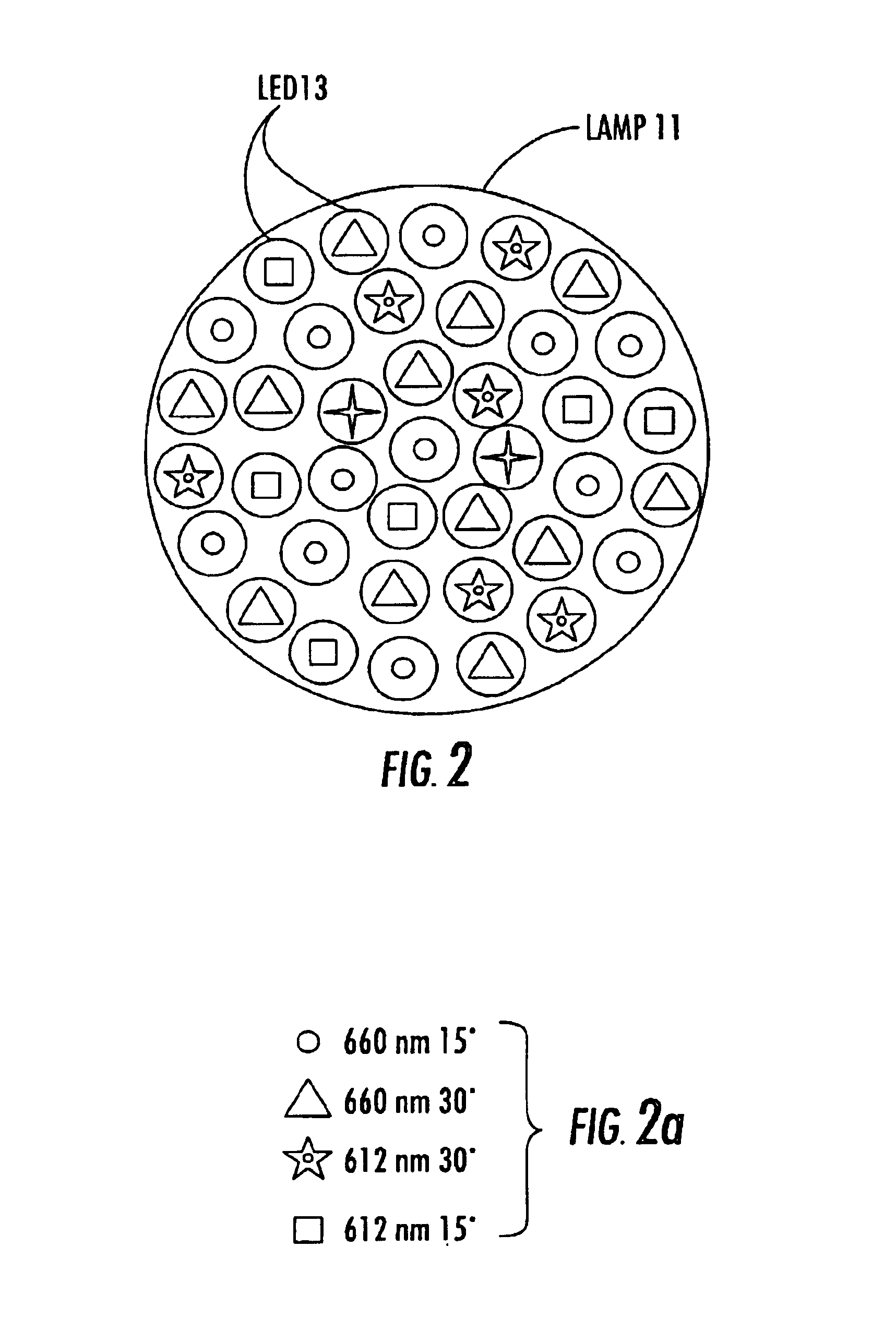Efficient LED lamp for enhancing commercial and home plant growth
a technology of led lamps and plants, applied in the direction of lighting and heating apparatus, process and machine control, instruments, etc., can solve the problems of affecting the growth of plants under them, modifying energy inefficient “white light, and emitting short wavelength uv ligh
- Summary
- Abstract
- Description
- Claims
- Application Information
AI Technical Summary
Benefits of technology
Problems solved by technology
Method used
Image
Examples
Embodiment Construction
[0020]We finally found that the proportion of twelve red 660 nm LEDs plus six orange 612 nm LEDs and one blue 470 nm LED was optimal. Our preferred circular lamp can hold two of these optimal sets of LEDs, resulting in a device with twenty-four red 660 nm LEDs, twelve orange 612 nm LEDs, and two blue 470 nm LEDs. Also, we used mixed LED strings that contained both types of LEDs for enhanced wavelength mixing.
[0021]We used LEDs having two beam spreads of 15° and 30°, in equal proportions, for both the 660 nm LEDs and 612 nm LEDs. When directed perpendicular to the upper surface of mature cotton plant leaves, we found that a quantum light sensor placed below the leaf registered 10% light transmission for the 30° LEDs, and 80% light transmission for the 15° LED, and fully 50% of the orange / red spectrum primarily used for photosynthesis was transmitted through the upper leaf canopy, making it available to support photosynthesis in leaves below.
[0022]Another aspect of our invention resul...
PUM
 Login to View More
Login to View More Abstract
Description
Claims
Application Information
 Login to View More
Login to View More - R&D
- Intellectual Property
- Life Sciences
- Materials
- Tech Scout
- Unparalleled Data Quality
- Higher Quality Content
- 60% Fewer Hallucinations
Browse by: Latest US Patents, China's latest patents, Technical Efficacy Thesaurus, Application Domain, Technology Topic, Popular Technical Reports.
© 2025 PatSnap. All rights reserved.Legal|Privacy policy|Modern Slavery Act Transparency Statement|Sitemap|About US| Contact US: help@patsnap.com



